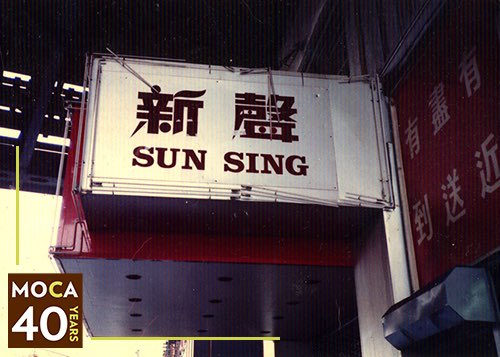
Today is Day 16 of the MOCA 40 Stories campaign where we celebrate MOCA's 40th Anniversary by sharing 40 stories over 40 days on social media.
Each story reveals a facet of the untold history of MOCA, using iconic archival images from the Museum’s Collections. (1/5)



Each story reveals a facet of the untold history of MOCA, using iconic archival images from the Museum’s Collections. (1/5)




1995 would see the museum take its second name change. The previously renamed Chinatown History Museum would become the Museum of Chinese in the Americas (MoCA). This name change would reflect the museum’s new direction. (2/5)
As the study of the Chinese diaspora grew, the museum expanded its collection and education efforts beyond the borders of Chinatown. That same year, the museum would work with the Triennale Di Milano in Italy to exhibit a show entitled “China/town: Naming Ethnic Spaces.” (3/5)
The exhibition team also began planning stages for the permanent exhibition “Where is Home?”, which would be installed a year later in 1996.
Images courtesy of MOCA's Collections.
Be sure to follow us as we share more MOCA 40 Stories at #moca40stories! (4/5)
Images courtesy of MOCA's Collections.
Be sure to follow us as we share more MOCA 40 Stories at #moca40stories! (4/5)
Do you have a favorite MOCA story from the past 40 years? Share it with us by using the hashtag #moca40stories or tagging us at @mocanyc.
#moca40stories #chineseamerican #chinatown #asianamerican #AAPI #history #arts #americanhistory (5/5)
#moca40stories #chineseamerican #chinatown #asianamerican #AAPI #history #arts #americanhistory (5/5)
• • •
Missing some Tweet in this thread? You can try to
force a refresh






